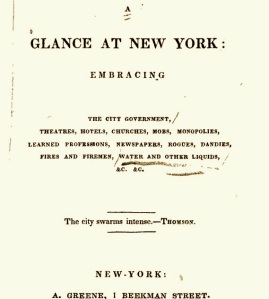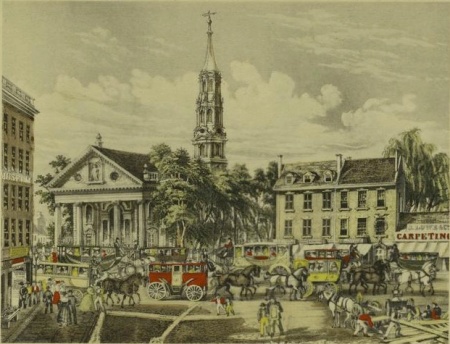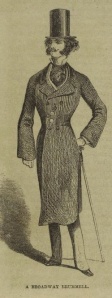The magnificent boulevards of Prague and Vienna are resplendent with Art Nouveau building facades, lobbies, and public transit entrances.
But the sinuous lines and naturalistic curves characteristic of this artistic style never caught on in turn-of-the-century New York, where architects seemed to prefer the stately Beaux Arts or more romantic Gothic Revival fashion.
 It’s this rarity of Art Nouveau in Gotham that makes the 13-story edifice at 20 Vesey Street so spectacular.
It’s this rarity of Art Nouveau in Gotham that makes the 13-story edifice at 20 Vesey Street so spectacular.
Completed in 1907, this is the former headquarters for the New York Evening Post—the precursor to today’s New York Post, founded in 1801 by Alexander Hamilton.
The building is across the street from the graveyard behind St. Paul’s Chapel off Broadway, a wonderful place to look up and linger.
 Architect Robert D. Kohn designed the limestone structure with three rows of wavy windows and crowned it with a copper roof.
Architect Robert D. Kohn designed the limestone structure with three rows of wavy windows and crowned it with a copper roof.
At the 10th floor, Kohn added a playful touch for a media company: four figures meant to represent the “Four Periods of Publicity“: the spoken word, the written word, the printed word, and the newspaper.
Note the “EP” insignia decorating the iron railings that link the four figures.
The Evening Post moved out in 1930, and today 20 Vesey is known as the Garrison Building, which houses a fairly typical mix of businesses behind its European-like facade.
Art Nouveau–inspired buildings are scattered in different pockets of New York, such as this former department store on Fifth Avenue and 34th Street.
Plans for an Art Nouveau hotel around the corner on Church Street drawn up in 1908 by Spanish architect Antoni Gaudi, unfortunately, never panned out.
[Third photo, 1910, MCNY x2010.7.1.887]






